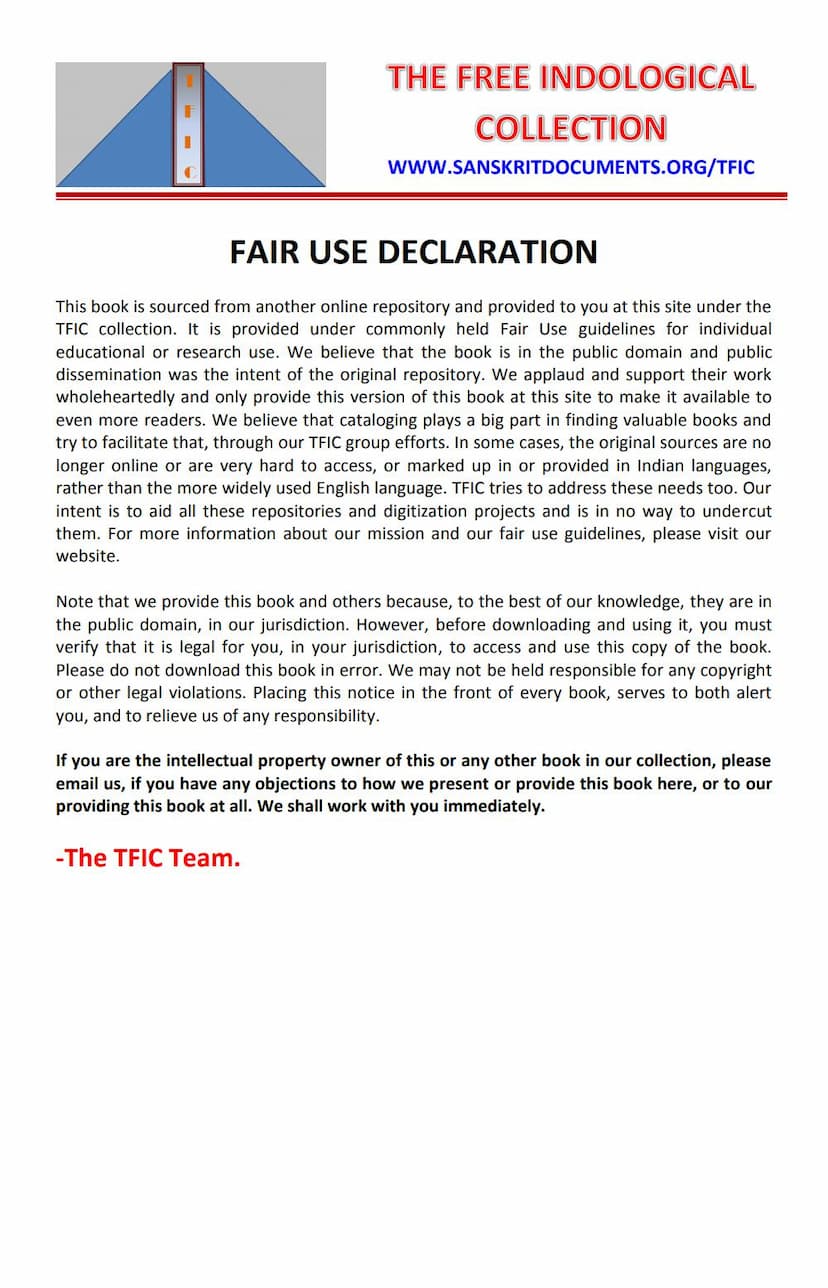Life And Stories Of Jaina Savior Parcvanatha
Added to library: September 2, 2025

Summary
Here is a comprehensive summary of "The Life and Stories of the Jaina Savior Parcvanatha" by Maurice Bloomfield, based on the provided text:
Overview: This book, published in 1919 by Maurice Bloomfield, offers a detailed exploration of the life and teachings of Pārçvanātha, the twenty-third Jaina Tīrthamkara (spiritual teacher or savior). Bloomfield's work is a digest of Bhāvadevasūri's "Pārçvanātha Caritra," providing the Western world with its first complete account of Pārçva's life, including his numerous pre-births and the illustrative stories woven into his narrative. The book aims to familiarize readers with the Pārçvanātha cycle of legends, highlighting its rich narrative and moral teachings.
Key Themes and Content:
-
Pārçvanātha's Significance: Pārçvanātha is presented as a foundational figure in Jainism, whose doctrines are fundamental to the religion. While his historical existence is considered by some to be less certain than that of Mahāvīra, his legend and teachings hold immense importance in Jain consciousness.
-
Frame Story and Pre-births: The core narrative follows the "frame story" of Pārçvanātha's life. This includes a series of nine pre-births (and his eventual birth as Pārçva), which meticulously detail the perpetual enmity between two souls: Marubhūti (who becomes Pārçva) and Kamaṭha (who becomes his adversary, Meghamālin). This animosity, often stemming from sibling rivalry and betrayal, is carried through each rebirth until Marubhūti's soul ripens into that of the Savior Pārçva and Kamaṭha's soul is eventually converted.
-
Illustrative Stories (Jaina Fiction): Interspersed within the main narrative are numerous "intercalated" or "emboxed" stories, which are among the best examples of Jaina fiction. These stories serve to illustrate the moral and ethical principles espoused by Pārçva and Jainism in general. They cover a wide range of themes:
- Virtues: The text delves into key Jaina virtues like ahinsā (non-injury), satya (truth), asteya (non-theft), brahmacarya (chastity), aparigraha (non-possession), vinaya (tact), viveka (discernment), susamga (good association), and sattvatā (courageous endurance).
- Moral Lessons: Many stories highlight the consequences of vice (greed, anger, lust, deceit) and the rewards of virtue, piety, and adherence to religious vows. Examples include the stories of Lalitāñga and Sajjana, King Vasu's violation of truth, the thief Vasanta, King Sundara's chastity, the miserly merchant Dhanasāra, and the wicked Kāpālika.
- Motifs: The book extensively references and analyzes common motifs in Hindu fiction, such as the "overhearing" motif, "promise to return," "biter bit," "poison damsel," "animated statues," "Uyiah letter" (referring to King David's command to have Uriah killed), and the transformation of animals.
- Mythological and Religious Themes: The narratives often incorporate elements of Hindu and Jaina mythology, including the roles of gods, demons (Asuras), Yakshas, Vidyādharas, and the significance of serpent lore in Pārçva's story (his name itself deriving from his mother seeing a serpent nearby during pregnancy).
-
Jaina Doctrine: The book also touches upon core Jaina concepts such as karma (action and its consequences), samsāra (the cycle of birth and death), nirvāṇa (liberation), the five great vows (mahāvratas) and their householder equivalents (aṇuvratas), and the importance of samyaktva (right faith or perfect understanding).
-
Linguistic Analysis: Bloomfield includes appendices that examine the language of the text, noting the influence of Prakrit on the Sanskrit, identifying rare or new words, and analyzing grammatical particularities. This demonstrates a scholarly approach to the text beyond mere storytelling.
-
Structure: The book is structured into eight sargas (cantos or chapters), each focusing on specific periods or aspects of Pārçvanātha's pre-births and life, framed by the overarching narrative of his existence and spiritual development.
Key Figures:
- Pārçvanātha (Marubhūti): The central figure, the twenty-third Jaina Tīrthamkara, whose life and teachings are the subject of the book.
- Kamaṭha (Meghamālin, and others): Pārçva's perpetual adversary across many lifetimes, representing the forces of evil and ignorance.
- Various Kings, Princes, Sages, Merchants, and Ordinary People: These characters populate the illustrative stories, embodying various virtues and vices, and serving as vehicles for moral lessons.
Bloomfield's Contribution: Bloomfield's work is significant for its meticulous digest of the stories, its extensive cross-referencing to parallels in other Indian and Western literature, and its scholarly analysis of the language. He provides context for the Jaina legends within the broader landscape of world fiction and religious traditions. The "Additional Notes" section is particularly valuable for its detailed exploration of recurring motifs and their variations.